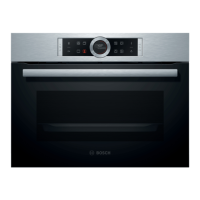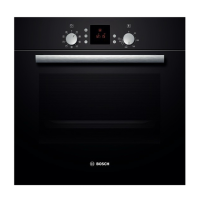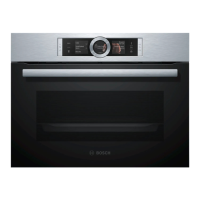Tested for you in our cooking studio. NL
End canning
Fruit
on a cold or wet surface, otherwise they could snap.
Cover the preserving bottles to protect them from
drafts. Only remove clamps when the glasses are cold.
After some time, bubbles rise at short intervals. Switch off
the appliance as soon as all the preserving bottles form
bubbles. Remove the pre-heating bottles from the interior
after the stated heating time.
Recommended setting values
Vegetable
The times indicated in the setting table are guidelines
for preserving fruit and vegetables. These can be
influenced by the ambient temperature, the number of
jars, the quantity, the temperature and the quality of the
contents. The data refer to round jars of 1 liter. Before
switching or switching off, check whether the jars are
actually bubbling. The bubbling starts after about 30-60
minutes.
After some time, bubbles rise at short intervals. As soon
as all preserving bottles are bubbling, reduce the
temperature to 120 °C and let the bottles continue to
bubble in the closed interior as indicated in the table.
After this time has elapsed, switch off the appliance and
use the residual heat for a few more minutes as
indicated in the table.
After preserving, remove the bottles from the interior
and place them on a clean cloth. Don't put the hot pots
Heating method used:
■ < 4D hot air
canning Forms slide-in
height
confuse
ming culture in °C
method
Tempera- Duration in min.
Vegetables, e.g. carrots Canning jars 1 liter 1 < 160-170
120
until bubbling: 30-40
from bubbling: 30-40
Reheating: 30
until bubbling: 30-40
Reheating: 30
until bubbling: 30-40
Reheating: 35
until bubbling: 30-40
Reheating: 25
-
Vegetables, e.g. cucumber Canning jars 1 liter 1 < 160-170
-
Stone fruits, e.g. cherries,
plums
Canning jars 1 liter 1 < 160-170
-
Pome fruits, e.g. apples, strawberries 1 liter preserving jars 1 < 160-170
-
Let dough rise
Separate doneness
Place the cake at the shelf level indicated in the table.
Yeast dough can rise significantly faster in the appliance
than at room temperature. Use the top and bottom
heating method. Only start operation when the cooking
compartment has completely cooled down.
If you want to preheat, the individual doneness takes
place outside the appliance in a warm place.
Recommended setting values
Always let yeast dough rise twice. Note the data in the
setting tables for 1st and 2nd proofing (dough
doneness and individual doneness).
Temperature and duration of fermentation depend on the
type and quantity of the ingredients. For this reason, the
values in the setting table are guideline values.
Dough doneness
Set as shown in the table. and heat the device. Place the
dough bowl on the grid.
Heating method used:
■ % Top and bottom heat
Do not open the appliance door during fermentation,
otherwise moisture will escape. The dough with a moist
cover cloth.
Dish Accessories/shapes slide-in
height
confuse
mingsme-
method
Step Tempera-
ture in °C
Duration in
min.
Yeast dough, light come 1 % doneness of
dough
35-40 25-30
Baking tray 1 % Separate
doneness
35-40 10-20
Yeast dough, heavy and high in fat come 1 % doneness of
dough
35-40 20-40
Baking tray 1 % Separate
doneness
35-40 15-25
47

